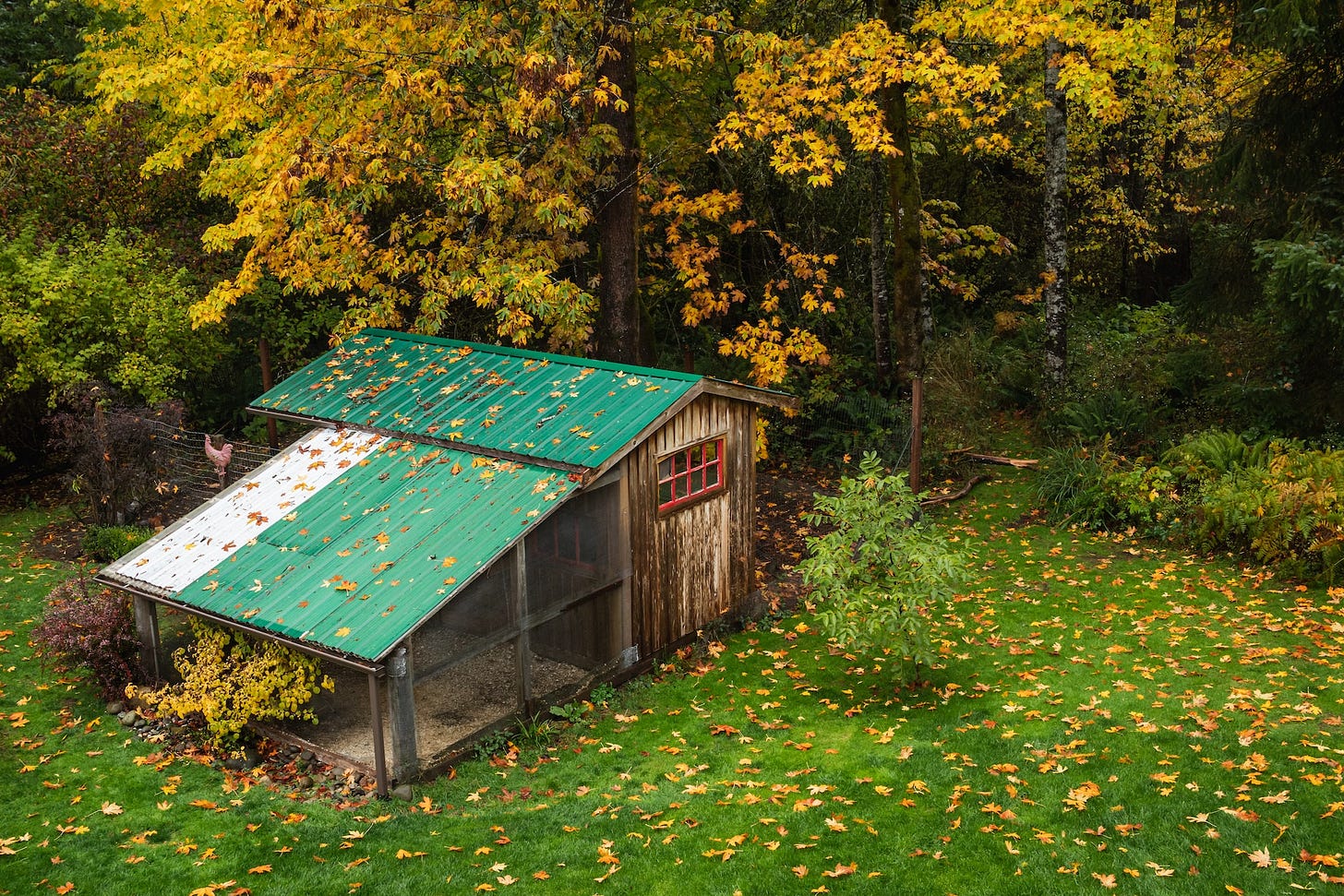
Could we create a Small Business Innovation Research (SBIR) program to incentivize builders to build small, affordable homes?
My grandfather and great-grandfather built my grandparents’ first house. It was a short distance down the lane from the ranch house. My grandparents were 18-year-old newlyweds; they would go on to be married until he passed away nearly 50 years later.
The house was two used chicken coops they pushed together. One chicken coop became a room for sleeping, the other for daily activities. It was cold in the winter and hot in the summer.
If you’ve never been inside a chicken coop, allow me to explain that they are not a structure you would want to live in. Chickens are not clean animals. They explore every inch of their nesting area, leaving droppings along the way. They are dirty and dusty. They bring in bugs of both the microscopic bacterial variety and the visible insect variety.
In short, you would prefer not to live in a used chicken coop. What’s more, in the 1940s, when my grandparents were married, there was no such thing as a pressure washer. Of course, they could scrub the floors, walls, and ceiling with soapy water. Maybe they had some money for paint, but if their first house was two chicken coops, they might not have had paint.
Even the ranch house itself wasn’t significant. It was a two-bedroom, one-bath house. My grandfather had a younger brother still living at home, along with my great-grandfather and great-grandmother. Given the choice to live in a two-bedroom house with your new spouse, brother, and parents, you might choose to live in a chicken coop house, too.
My grandparents went on to raise three children. He became the president of a small industrial manufacturing company, as well as a cattle rancher. She became a church pianist and organist. At different times, they owned two nice houses and had a hardworking, comfortable life.
But they started their lives together in a chicken coop house. That meant they didn’t have the burden of debt from renting an apartment while trying to save money to buy a home.
Small houses are a great way to build equity and save money to get a head start on financial security for the rest of your life. And America needs more of them.
Problem: The lack of small, affordable homes is both a market failure and a social issue that affects the well-being and financial health of young American generations.
Builders don’t make many ‘starter’ homes anymore. Factors such as land and material costs and regulatory fees encourage builders to build larger homes to recoup profits. Housing prices have grown four times faster than household income since 1960. The median cost for a house in 1960 was $11,900, while the median income in 1960 was $5,600. Those 1960s houses were smaller compared to today’s standards, but similar houses aren’t available anymore.
We need to incentivize builders to build small houses again--600 to 1000 square foot homes or condos with one or two bedrooms and one bath, a sitting room, and a kitchen. We don’t need to build these as investment properties; we need to develop them as homes that young Americans can buy for their first home. (And we need to give first-time homebuyers the one-time opportunity to buy a home at a 3% interest rate to put them on solid financial footing for the rest of their lives).
How are we going to do this? We need builders to compete. Competition drives innovation. Innovation drives change.
How would we create competition for home builders to build small homes?
Intent to achieve: America needs a healthy supply of move-in ready homes for first-time homebuyers that cost less than $150,000.
The median cost for a house in 1960 was $11,900, while the median income in 1960 was $5,600. So, the median cost for a home in the 1960s was approximately twice the median income. The median household income in 2022 was $74,580. $150,000 is twice the current median household income.
What’s our path? We need to create a Small Business Innovation Research (SBIR) program for home builders to compete to drive innovation in the starter home market.
SBIR programs are federal government grant programs that encourage small businesses to compete to engage in research and development (R&D) with the intent of commercialization. SBIR is highly competitive and promotes firms to explore their technological potential. The programs provide the incentive to profit from innovation through commercialization. The SBIR model succeeds in several industries by offering grants or contracts to small businesses to carry out research and development with commercial potential. An SBIR program can kick off the competition by pushing the envelope. Continued SBIR programs keep driving innovation.
One approach won’t solve all housing problems. Systemic problems require systemic fixes. An SBIR program geared towards building small, affordable homes must be part of a significant push to improve innovative construction materials, energy-efficient designs, affordable building techniques, and modular or prefabricated homes. We must further partner with state and local governments to ensure supporting planning and administration, such as permitting and zoning, to achieve beneficial long-term results.
There’s already an existing SBIR grant program that could apply to building small, affordable homes in rural America. The US Department of Agriculture (USDA) sponsors an SBIR grant program for Rural and Community Development. The Request for Applications (RFA), Topic 8.6, pg 19, identifies:
The objective of the Rural and Community Development topic area is to improve the quality of life in rural America by creating and commercializing technologies that address important economic and social development issues or challenges in rural America. Projects must explicitly discuss the specific rural problem or opportunity that will be examined and how the proposed science-based technology will successfully address the problem or opportunity.
The USDA RFA further states:
The applications need not be centered on agriculture but may be focused on any area that has the potential to provide significant benefit to rural Americans. USDA seeks a balanced portfolio that appropriately mixes high risk, high reward innovations with new applications of existing technologies.
USDA anticipates applications will be due next year by September 17, 2024.
USDA needs to expand its scope and earmark some of this SBIR money specifically for small, affordable homes in rural America.
What about urban areas? America could convert empty lots and warehouses, no-longer-used parking lots, and dilapidated housing into small, affordable housing. The US Department of Housing and Urban Development can lead the way.
Unfortunately, the US Department of Housing and Urban Development does not sponsor an SBIR program.
We need legislative action to establish an SBIR program that earmarks funds for small, affordable housing in urban areas under the US Department of Housing and Urban Development.
We must tailor the SBIR model to the construction industry. For instance, an SBIR Phase I award could fund the conceptualization of affordable small home designs, and Phase II could support the building of prototypes. We must reward the most innovative designs and the use of already available materials such as reclaimed shipping containers or other previously used materials.
We need federal, state, and local governments to be on board. We need officials to fast-track zoning and permitting.
We must implement rules to ensure these homes are sold to owner-occupiers, particularly first-time homebuyers, to prevent them from being snapped up by investors.
Could we create a Small Business Innovation Research (SBIR) program to incentivize builders to build small, affordable homes?
SBIR for small, affordable houses could be part of a systemic solution to the systemic problem of small, affordable housing that impacts the well-being and financial health of young American generations.
May God bless the United States of America.














Share this post